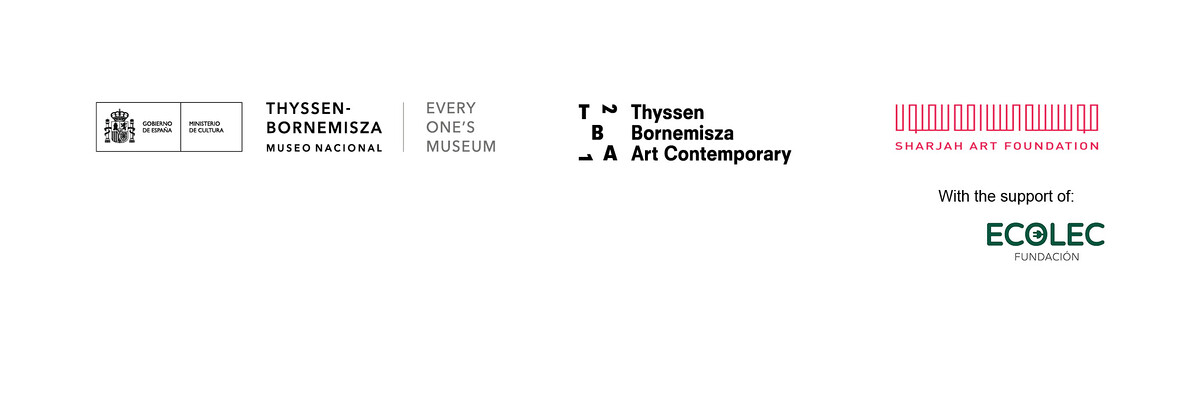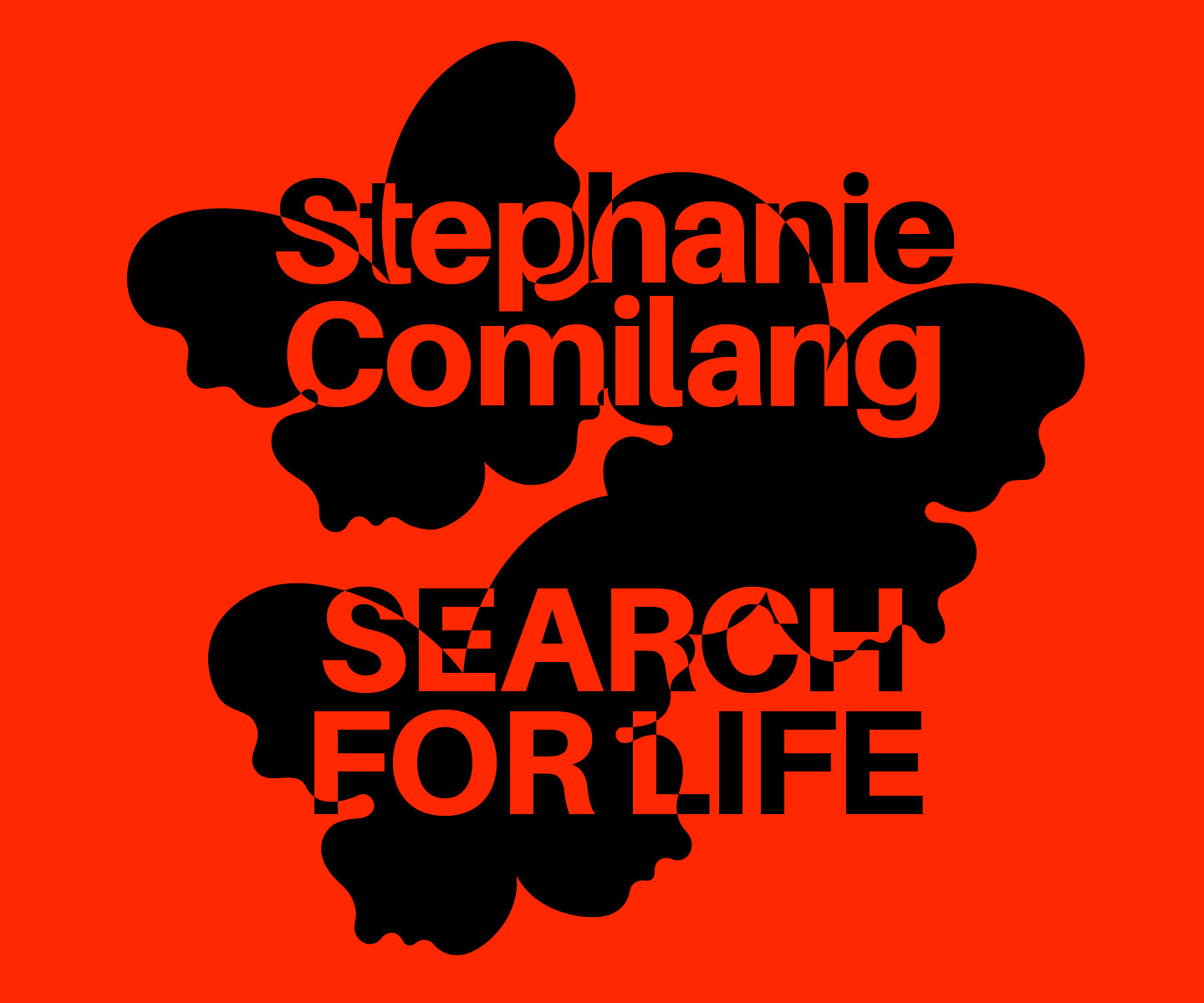Search for Life
March 5–May 26, 2024
Curated by Chus Martínez.
Film is a medium invented to allow for a succession of world projections. For the first episode of her diptych, Search for Life, Stephanie Comilang has developed an installation with a large-scale LED screen, mirror glass fixed on top the screen, a projection, and a series of textile works presented in rooms reminiscent of shipping containers in the center of the space. The work emphasizes how film is uniquely realistic as a medium, while it also nourishes its metaphysical and hallucinatory character by allowing us to see things that are absent. The mirror glasses accentuate this phantasmagoric effect.
What is there that is absent that this piece reveals? When they arrived in the Philippines the Spanish became aware of the inhabitants’ navigation expertise. The Philippines are an archipelago that comprises 7,107 islands. For centuries, people traveled safely between them while cultivating the exchange with Chinese seafarers and traders. When the Spanish placed the shipyards for the construction and outfitting of the galleons for the Manila-to-Acapulco trade route in Cavite, south of Manila, they forced the islanders to work for them. Thus began a new era for Filipino seafarers on cargo ships, a forced fate that continues to this day. Two of the characters in the film—a painter and a florist—are former seamen, workers of the global maritime industry that Filipino seafarers have become the backbone of. The film connects all its characters—also including a monarch butterfly, a historian, a scientist, and a child—with an idea: we all have the potential of becoming.
In Search for Life. Diptych, the monarch butterfly is a central figure. She speaks in a tongue that can be understood by animals and humans. The monarch butterfly is a species defined by migratory skills. Monarchs in North America undertake one of the longest migrations of any insect in the world, traveling several thousand kilometers each fall to their winter destinations in central Mexico. Not all survive this long trip, but every monarch born along the way remembers the goal and continues the collective march. Scientists found successful migrants have fewer black spots on their wings. Migratory monarchs had larger white spots, proportional to the wing area, than the non-migratory ones. Along the routes to assure their survival, the butterflies also pass these color signaling in their wings. How do larger white spots aid their journey? How much do they remember of what they saw along these routes?
It seems only natural that these incredibly delicate animals, who weigh less than half a gram, would strive to tell their stories. Stories intertwined with the lives of the millions of migrants around the globe, with the stories of the routes discovered and invented to survive, explore, exploit, exchange, and also enact extreme forms of cruelty and abuse. In Stephanie Comilang’s film and textile installation Search for Life, the butterfly takes on the task of weaving a story that brings together the Manila galleon trading routes connecting Mexico with the Philippines and the preponderance of Filipino seafarers in trading fleets. The butterfly is here present as a voice and is also present as a motif in the embroideries on pinneapple fabric in the two rooms with screens and mirrors. The very form of this installation is driven by a desire to transcend dualities. No one is untouched by history. No one is unaffected by migration. No one is unmoved by culture.
—Chus Martínez, exhibition curator.
Stephanie Comilang. Search for Life. Diptych (2024-2025) is a work in the form of a diptych commissioned by TBA21 and Sharjah Art Foundation. The work unfolds in two episodes that are composed of independent pieces but together tell a single story. The first episode of the work, curated by Chus Martínez, is presented at the Museo Nacional Thyssen-Bornemisza, Madrid (5 March - 26 May 2024) and the second episode, curated by Amal Khalaf, will be presented at Sharjah Biennial 16, United Arab Emirates (February–June 2025).
Search for Life is Stephanie Comilang’s first major solo exhibition in Spain and her most ambitious project to date, including a new video commissioned with Sharjah Art Foundation, as well as a sculptural installation made of fabric and embroidery. The exhibition fuses documentary and fiction, aimed at recreating the experience of other identities, while proposing a different understanding of nature as impacted by colonial exploitation, but also of rituals that suggest the possibility of a new beginning.
The exhibition will also include a digital publication that can be downloaded, which offers a curatorial description along with contributions from two leading figures of the Philippine cultural scene: Feifei Zhou, an architect, artist and researcher who is committed to investigating another way of understanding the role and position of nature on our planet; and Mara Coson, one of the most iconic voices of the new Philippine literature. These two figures will also visit Madrid to talk with Chus Martínez as part of the public program that will supplement the exhibition. Furthermore, this program will include educational talks, screenings, and workshops, which will feature international guests as well as local artists and communities of Filipino descent.
About Stephanie Comilang
Stephanie Comilang is an artist living and working in Berlin. Her documentary-based works create narratives that look at how our understanding of mobility, capital, and labor on a global scale is shaped through various cultural and social factors. Her work has been shown at Tate Modern, Hamburger Bahnhof, Tai Kwun Hong Kong, International Film Festival Rotterdam, Julia Stoschek Collection, and Haus der Kunst. She was awarded the 2019 Sobey Art Award, Canada’s most prestigious art prize.
Find out more about TBA21’s program at tba21.org



